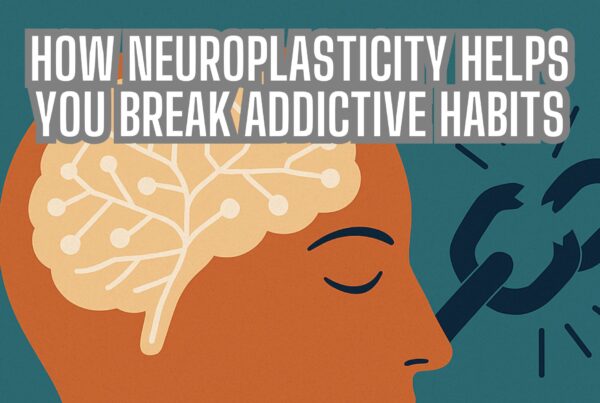Navigating Digital Communication Stress
Look around, and it’s evident that our world is tethered to digital devices. The necessity of digital connectivity in today’s environment brings with it a significant amount of stress. The pandemic has magnified our dependence on digital platforms, underscoring the importance of managing the associated stress. In this blog, we’ll explore strategies for navigating digital communication stress, offering insights and strategies to maintain a balance between connectivity and mental well-being.
The Double-Edged Sword of Group Chats
Group chats have evolved from vital connections in the lockdown’s early days to significant stress sources. The rapid shift from support to overwhelm, as endless messages demand immediate responses, illustrates the pressures of our hyper-connected age. This shift challenges us to evaluate our digital engagements critically, recognizing when the drawbacks of group chats outweigh their benefits.
Additionally, the constant pressure to stay engaged and up-to-date in group chats can shift these spaces from sources of comfort to stress. Striking a balance between the need for connection and preserving mental well-being amidst digital noise is a modern challenge. This balance is crucial in an era where the lines between digital connectivity and personal peace are increasingly blurred, emphasizing the need for effective digital communication stress management strategies.
Understanding Notification Anxiety
Notification sounds have become synonymous with stress triggers, eliciting immediate anxiety responses. This Pavlovian reaction to our devices puts us in a perpetual state of alertness, bracing for the next interruption. It highlights the importance of mindful technology interaction to mitigate anxiety.
This constant anticipation of notifications can turn even non-urgent alerts into sources of stress, disrupting our focus and peace. Managing how we interact with our devices and setting boundaries around notifications can help reclaim our mental space and reduce stress.
Diverse Tolerance Levels and Opting Out
Everyone has unique thresholds for digital communication engagement. Recognizing and honoring these limits is crucial for digital well-being. Opting out of constant texting or group chats, when necessary, is a valid choice. Explaining your need for breaks to friends and family can empower you to manage your digital stress effectively.
Adopting strategies like turning off notifications, muting conversations, or taking temporary breaks from group chats can be liberating. It allows for a healthier interaction with digital platforms, ensuring that our engagement enhances rather than detracts from our well-being.
The Case for Voice-to-Voice Communication
While texting and messaging dominate our communication landscape, voice-to-voice interactions hold invaluable benefits. Phone conversations allow for deeper connections, offering a more empathetic and personal exchange. This form of communication can significantly alleviate the impersonal and often stressful nature of text-based communication.
Encouraging voice-to-voice communication not only diversifies our interaction methods but also provides a richer, more emotionally fulfilling experience. It serves as a reminder of the power of traditional communication methods in strengthening connections and reducing digital stress.
Strategies for Managing Digital Communication Stress
1. Set Boundaries: Define clear digital communication boundaries, including specific times for device engagement. This helps manage expectations and reduces the pressure to be constantly available.
2. Prioritize Quality Over Quantity: Engage in meaningful conversations instead of trying to respond to every message. This approach fosters deeper connections and reduces stress.
3. Take Regular Digital Detoxes: Carve out times to disconnect from digital devices completely. These breaks can refresh the mind and reduce feelings of overload.
4. Use Technology Mindfully: Be intentional in your use of digital tools. Select the most fitting platform for your communication needs and consider the emotional impact of your engagements.
5. Seek Face-to-Face Interactions When Possible: Despite limitations, seek opportunities for in-person or video call interactions. These can foster a sense of human connection beyond the digital realm.
Adopting these strategies can help individuals navigate the complexities of digital communication stress more adeptly. Finding a balance that allows for connectivity without compromising mental well-being is essential in today’s digital age.
Release Hypnosis Melbourne Hypnotherapy
Release Hypnosis Melbourne Hypnotherapy offers support for those grappling with digital overload. We provide strategies to manage anxiety and enhance mental health. Our approach, incorporating hypnotherapy and mindfulness techniques, paves the way for a balanced and less stressful digital existence.
Lawrence Akers at Release Hypnosis has been offering Hypnotherapy and ACT-based work since 2015. Conveniently located on St Kilda Rd, Melbourne, Release Hypnosis is accessible and ready to support a broad range of issues. For those uncertain about hypnotherapy, we offer a free 30-minute discovery call. Visit our website to learn more.
Book Your FREE 30 Minute Consultation With Release Hypnosis NOW!
You may also like to read:
Exploring Content-Free Hypnotherapy
The Journey to Becoming a Better Hypnotic Subject
Best Hypnotherapy Resources 2023: Release Hypnosis Top Blogs
What Is The Success Rate of Hypnosis?








